The impact of an interoceanic canal in Nicaragua.
Categories: community, Environment, People
The Nicaragua Interoceanic Grand Canal is a shipping route under construction through Nicaragua to connect the Caribbean Sea (and therefore the Atlantic Ocean) with the Pacific Ocean. As of September 2015, no substantial building has taken place. It has been declared that building of ports and locks will begin prior to the end of 2015, but no money has yet been deposited for construction.
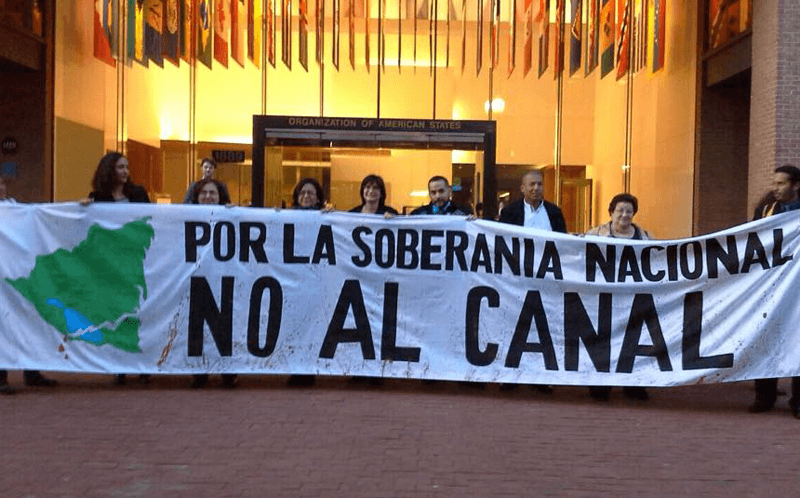
People protesting in front of the OAS wgile others took the banner to display it in front of the UN.
China’s Hong Kong Nicaragua Canal Development Investment Company (HKND) recently started building of a canal linking the Atlantic and Pacific oceans through Nicaragua. The “Interoceanic Canal” route will include a 105-kilometer swath across Lake Nicaragua.
The roughly 500-m-wide and 30-m-deep channel will require the removal of around 1.2 billion tons of sediment from the lake bottom. The notion of assembling a man-made waterway through Central America is not new. The colonial administration of New Spain conducted preliminary surveys. The routes proposed typically ran across Nicaragua, Panama, or the Isthmus of Tehuantepec in Mexico. The 259.4 kilometer long canal as planned will have three sections. The Nicaragua Lake section measures 106.8 km and runs from 4 km south of San Jorge to 8 km south of San Miguelito.
The Nicaraguan authorities, by contrast, expects the canal can eventually reach the Sandinista dream of eradicating poverty. In return for a concession to the obscure Chinese firm HKND, it expects for billions of dollars of investment, tens of thousands of jobs and, eventually, a secure source of national income.
Among the local peasants and farmers there’s widespread unease about what this mega-project will mean for their homes and people, wildlife and ecosystems. Can it bring wealth and increase or confusion and destruction? The Guardian travelled across the nation, as closely as possible to the planned course, to ask average Nicaraguans what the canal would mean to them, to get a feeling of the disposition as this latest tidal wave of global development strategies.
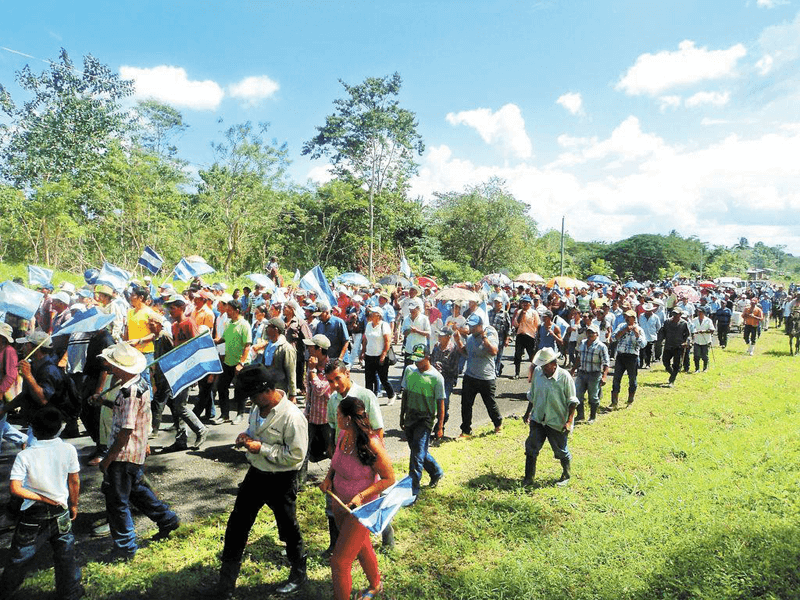
Local farmers, environmentalist and peasants started voicing their concerns since 2010 to the international community.
One concern that cannot be readily repaired with cash is the environmental impact of a globally important wetland, a project that cuts through four nature reserves, Central America’s largest body of freshwater and scenes of breathtaking beauty.
Yet, there’s disagreement about whether the potential environmental dangers are excessively high a cost to pay or whether the canal would contribute to protecting the environment nationwide and worldwide.
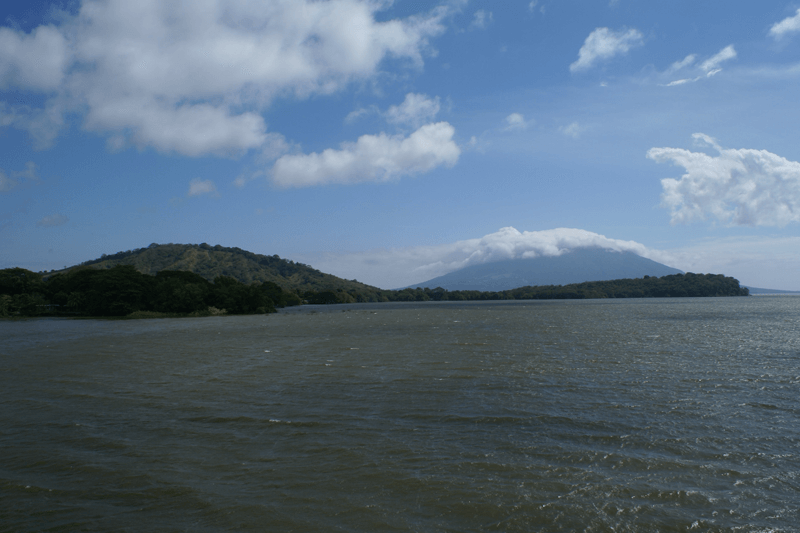
The beauty and unique ecosystem of fresh-water lake Nicaragua its at stake from shady Chinese construction practices.
The pros of an interoceanic canal in Nicaragua:
The arguments for the canal and its auxiliary jobs are that it’ll:
More than double the gross domestic product in Nicaragua over the following ten years, generating around 200,000 jobs for Nicaragua’s market permitting the government to remove extreme poverty.
Eventually completely incorporate the under-resourced Caribbean Coast into the nation
Help overcome Nicaragua’s present continual deforestation, ensure resources to save endangered, protected natural reserves and also redress the long-term sedimentation and pollution of Lake Nicaragua.
While increasing the strategic autonomy of Latin America and the Caribbean, ease global trade by adapting ships too large for the Panama Canal.
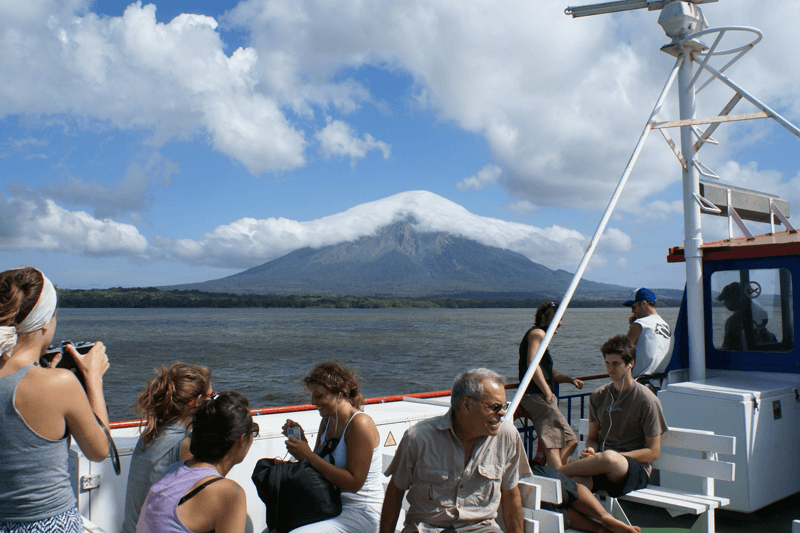
Concerns over how an obscure Chinese company will built the canal without further damaging sensitive environmental areas and how the local will benefit from such mega project.
Cons of an interoceanic canal in Nicaragua:
Many thousands of people will soon be displaced as a result of expropriations of there along the Canal route.
Likewise, opening a hallway through several natural reserves and native places will increase pressure on already threatened natural areas and tribal homelands.
But environmentalists warn the canal cloud the waters of Lake Nicaragua and could ruin sensitive habitats.
The project will even displace 30,000 farmers and native people from the Rama and other ethnic groups who reside along the canal route.
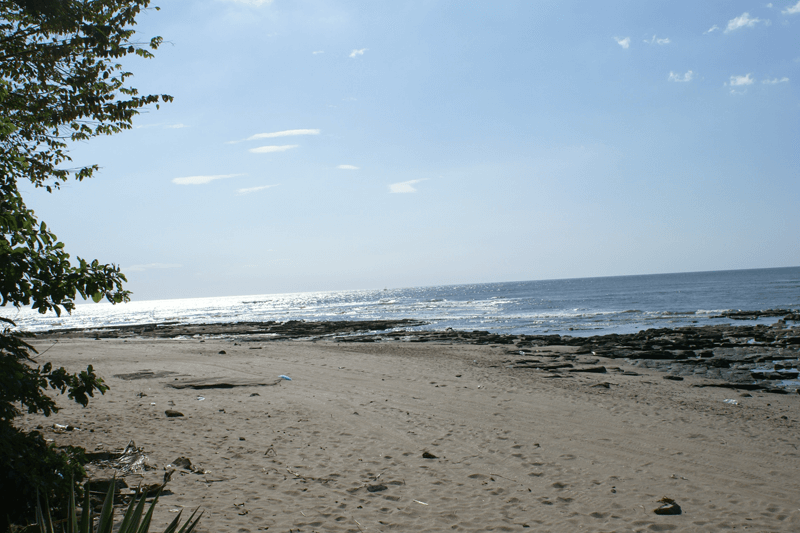
Protecting what has always being the country’s attraction, and that is its beaches kept from being over built and over-kill construction.
Anti-Chinese sentiment has grown among other Latin American countries, “China Rise” has generated anxieties due mainly to the perceive threats pose by environmental impacts, demand for natural resources and labor practices by Chinese conglomerates.
Studies examine the views of social media participants on the relationship between China and Latin America in particular, Facebook users expressing negative views in response to The Chinese agenda of taking Latin America’s resources in exchange for projects of questionable returns.
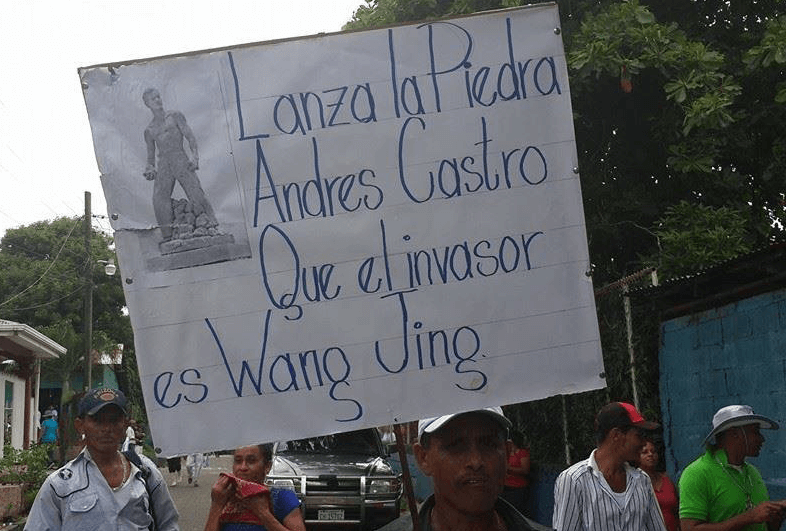
Locals expressing their anti-chinese- out-of-Nicaragua banners demonstrating a popular view about China shared throughout Latin America.
Plans to construct a $50 billion shipping canal 175 miles long have incited a mix of fury, fear and defiance not witnessed since the Sandinista revolution in 1979. Ortega, the current Nicaraguan president is accused of surrendering the country’s sovereignty, since the 100-year canal concession gives Chinese telecommunications magnate Wang Jing and his Honk Kong
Ortega, 69, is accused of surrendering Nicaraguan sovereignty, since the 100-year canal concession gives Chinese telecommunications magnate Wang Jing and his Hong Kong Nicaragua Canal Development Investment Co. (HKND) control over large swathes of the country.
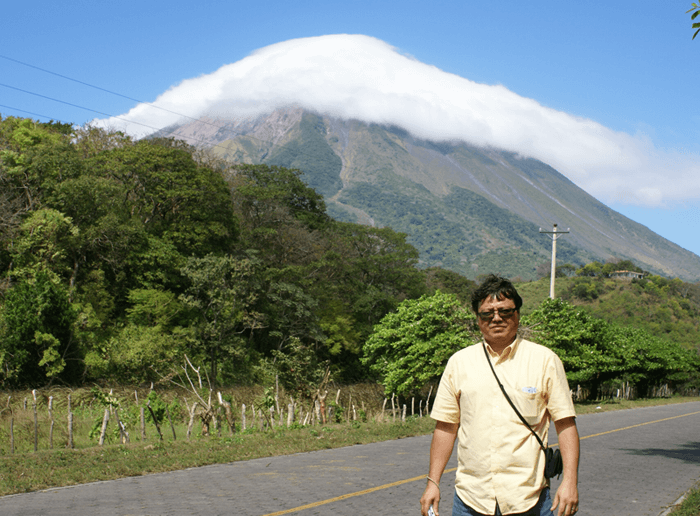
Chinese national surveying land for the construction of the canal under a cloud of secrecy in a record seven days with no public consultation, no feasibility or environmental studies.
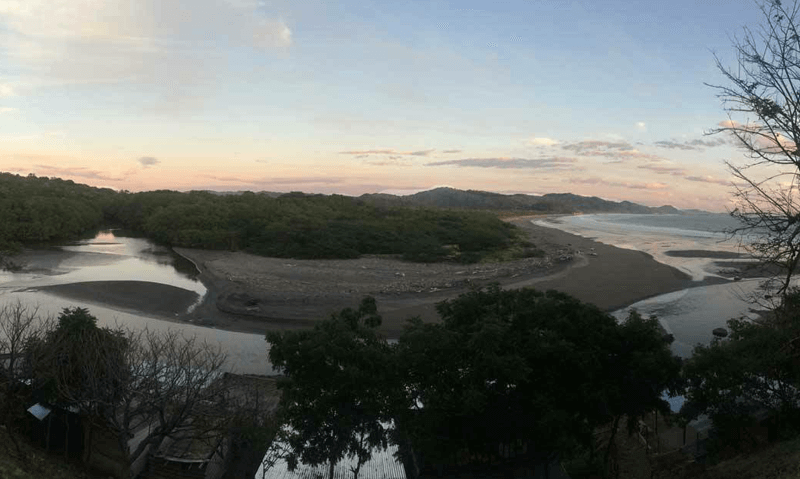
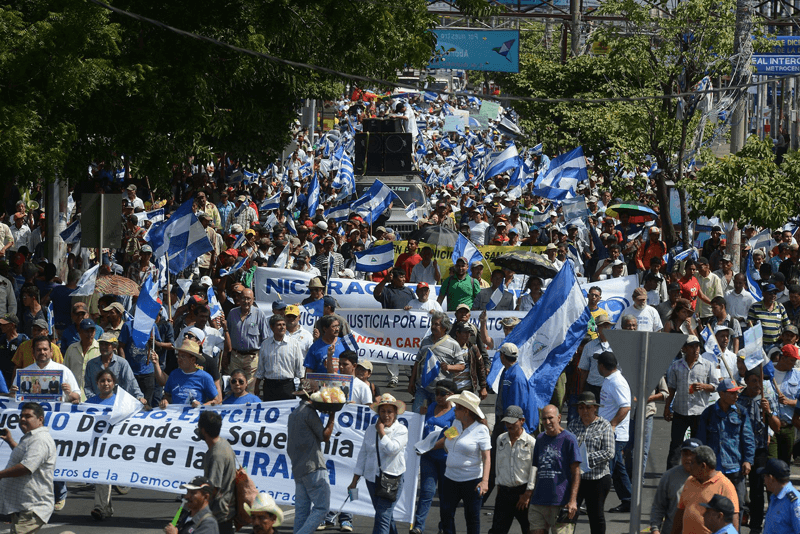
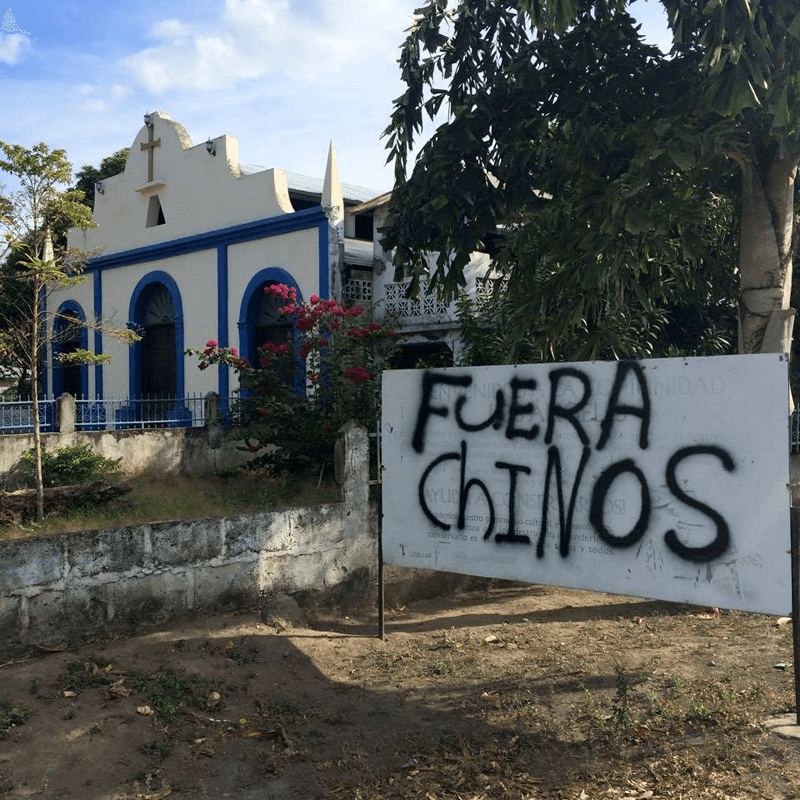
No comments yet.